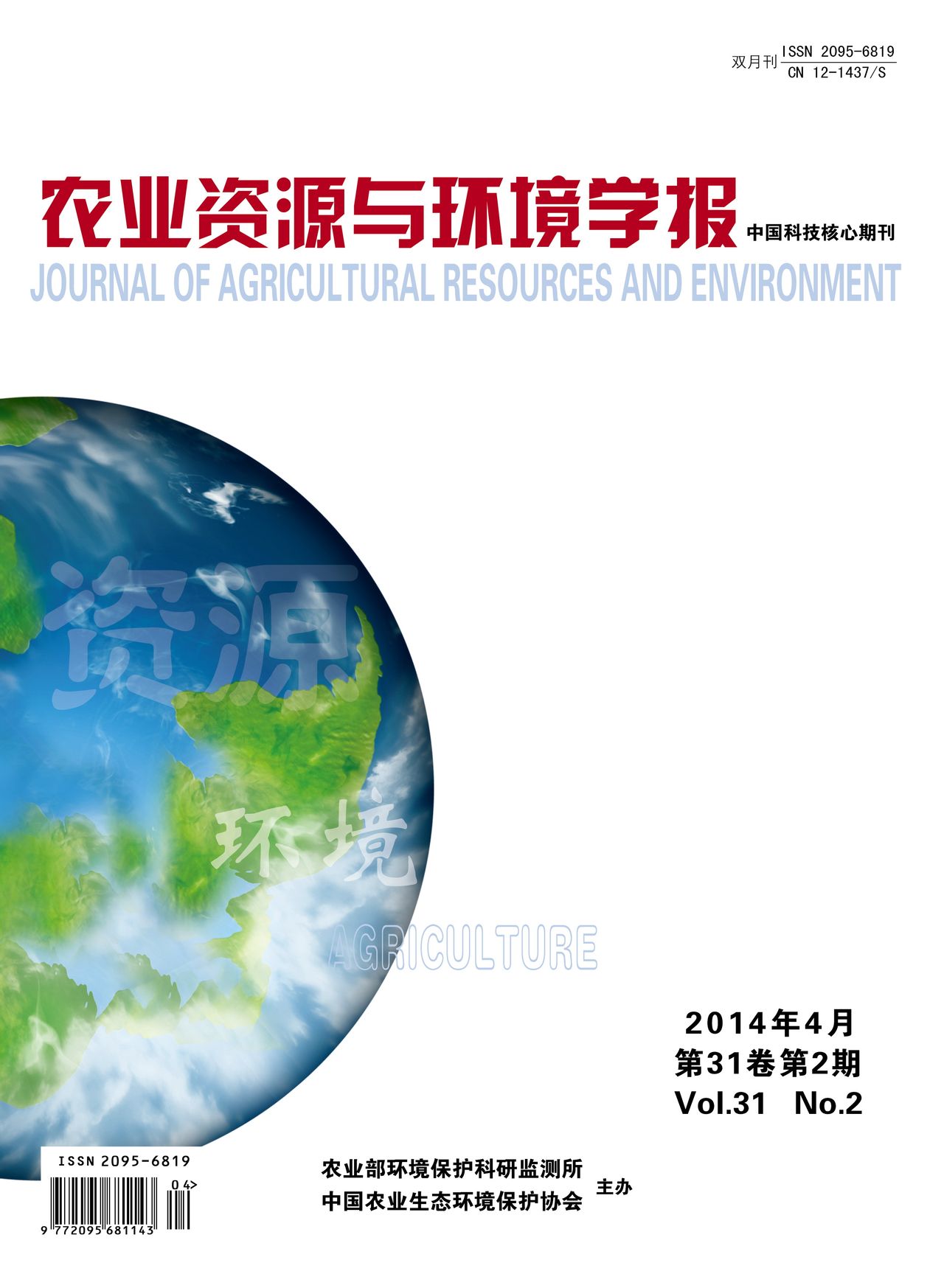大型奶牛场泌乳奶牛粪氮、粪磷含量预测
Q3 Agricultural and Biological Sciences
引用次数: 0
摘要
Received on: February 15, 2017 Fund Project: Tianjin Science and Technology Support Plan (Key) Project (12ZCZDNC09600); Science and Technology Innovation Project of the Chinese Academy of Agricultural Sciences; Introduction to the Author of the Agricultural Research Outstanding Talents and Innovation Team Project: Qu Qingbo (1992-), female, born in Huairen, Shanxi, with a master's degree, mainly engaged in research on pollution prevention and control in the livestock and poultry breeding industry. Email: qingboqu2014@163.com *Corresponding author: Zhang Keqiang Email: kqzhang68@126.com Abstract: In order to explore the feasibility of predicting fecal nitrogen and phosphorus content based on the nutritional composition and basic production status of lactating cows, a prediction model for fecal total nitrogen (FN) and fecal phosphorus (FP) content was established. This experiment takes Chinese Holstein cows as the research object, selects 7 representative large-scale dairy farms in Tianjin as sampling points, and collects basic data such as nutritional composition and basic production status of 20 groups of lactating dairy cows through questionnaire survey. 60 fecal samples are also collected to determine their nitrogen and phosphorus content. Select 14 groups of basic data such as nutritional composition and basic production status of lactating dairy cows' diets, and 48 samples of nitrogen and phosphorus content in lactating cow feces. Use SAS statistical analysis software to conduct correlation analysis and regression analysis, and establish a prediction model. The results showed that there was a significant positive correlation between organic matter intake (OMI) and crude fat intake (CFi) in the diet and the total nitrogen content in the feces of lactating cows, with correlation coefficients of 0.836 and 0.705, respectively. There is a negative correlation between body weight (BW) and total phosphorus content in feces of lactating cows, with a correlation coefficient of -0.525. The decision coefficient R2 of the prediction model established using multiple linear regression analysis is significantly higher than that of the univariate linear regression equation. The determination coefficient R2 of the fecal total nitrogen content prediction model based on milk yield (MY), days in milk (DIM), organic matter intake (OMI), and nitrogen intake (NI) of lactating cows can reach 0.96 (P about 0.001), and the prediction equation is: y=0.43+0.29 iMY+0.02 iDIM+0.92 iOMI-13.01 iNI. The determination coefficient R2 of the prediction model for total phosphorus content in feces is relatively lower than that of the prediction model for total nitrogen content, with a maximum of 0.62 (P about 0.10). The prediction equation is: y=22.97-0.026 iBW-4.02 iNI+14.63 iPI (phosphorus intake, PI). Finally, basic data on the nutritional composition and basic production status of 6 groups of lactating cow diets and corresponding 18 feces were used本文章由计算机程序翻译,如有差异,请以英文原文为准。
Prediction of Fecal Nitrogen and Fecal Phosphorus Content for Lactating Dairy Cows in Large-scale Dairy Farms
收稿日期:2017-02-15 基金项目:天津市科技支撑计划(重点)项目(12ZCZDNC09600);中国农业科学院科技创新工程项目;农业科研杰出人才及其创新团队项目 作者简介:渠清博(1992—),女,山西怀仁人,硕士研究生,主要从事畜禽养殖业污染防治研究。E-mail:qingboqu2014@163.com *通信作者:张克强 E-mail:kqzhang68@126.com 摘 要:为了探讨基于泌乳牛日粮营养成分及其基本生产状况预测粪便氮磷含量的可行性,建立粪便总氮(fecal nitrogen,FN)、粪便 总磷(fecal phosphorus,FP)含量的预测模型。本试验以中国荷斯坦奶牛为研究对象,选取天津市具有代表性的 7家规模化奶牛场为 采样点,利用问卷调查收集了 20组泌乳期奶牛日粮营养成分及基本生产状况等基础数据,并采集了 60份粪便样品,测定其氮磷含 量。选取其中 14组泌乳期奶牛日粮营养成分及基本生产状况等基础数据和 48份泌乳牛粪便的氮磷含量,利用 SAS统计分析软 件,对其进行相关性分析和回归分析,建立预测模型。结果表明:日粮有机质摄入量(organic matter intake,OMI)和粗脂肪摄入量 (crude fat intake,CFi)与泌乳牛粪便总氮含量有显著的正相关性,相关系数分别为 0.836和 0.705。泌乳牛体重(body weight,BW) 与粪便总磷含量呈负相关性,相关系数为-0.525。利用多元线性回归分析建立的预测模型的决定系数 R2显著高于一元线性回归方 程。其中基于泌乳牛产奶量(milk yield,MY),产奶天数(days in milk,DIM),日粮有机质摄入量 OMI和氮摄入量(nitrogen intake,NI) 建立的粪便总氮含量的预测模型的决定系数 R2可达 0.96(P约0.001),预测方程为:y=0.43+0.29伊MY+0.02伊DIM+0.92伊OMI-13.01伊 NI。粪便总磷含量的预测模型的决定系数 R2相对低于总氮含量的预测模型,最高为 0.62(P约0.10),预测方程为:y=22.97-0.026伊 BW-4.02伊NI+14.63伊PI (phosphorus intake,PI)。最后利用 6组泌乳牛日粮营养成分及其基本生产状况的基础数据和对应的 18份粪
求助全文
通过发布文献求助,成功后即可免费获取论文全文。
去求助
来源期刊

农业资源与环境学报
Agricultural and Biological Sciences-Agricultural and Biological Sciences (all)
CiteScore
1.90
自引率
0.00%
发文量
4438
审稿时长
24 weeks
期刊介绍:
Journal of Agricultural Resources and Environment (CN 12-1437/S, ISSN 2095-6819) is a national academic scientific and technical journal. It was founded in 1984, and used to be called Foreign Agricultural Environmental Protection and Agricultural Environment and Development. It is supervised by the Ministry of Agriculture and Rural Affairs, and co-sponsored by the Scientific Research and Monitoring Institute of Environmental Protection of the Ministry of Agriculture and Rural Affairs, and the China Association of Agricultural Ecological Environmental Protection. The journal is one of China's high-quality science and technology journals, China Science Citation Database (CSCD) core journals, Peking University Chinese core journals, China Science and Technology core journals, China Agricultural and Forestry core journals, and Tianjin Outstanding Journals. It is included in the international authoritative databases, such as Scopus database of the Netherlands, the database of the Center for International Agricultural and Biological Sciences Research (CABI) of the United Kingdom, the Stephens Database (EBSCOhost) of the United States, the Ulrichsweb (Ulrich's Guide to Journals) of the United States, EuroPub of the United Kingdom, the Abstracts Journal (AJ) of the Russian Federation, and the Copernicus Index (IC) of the Poland, and so on.
 求助内容:
求助内容: 应助结果提醒方式:
应助结果提醒方式:


